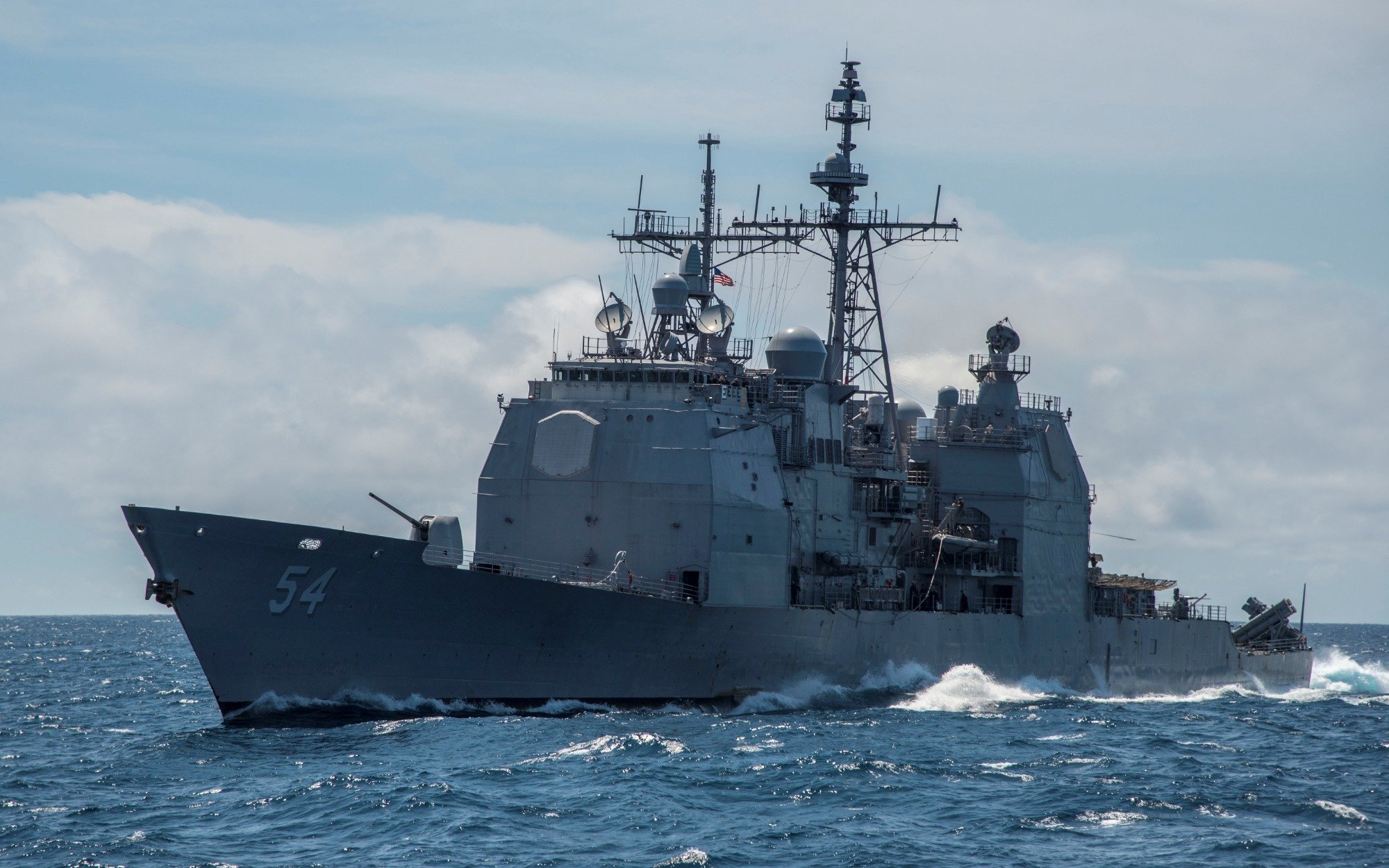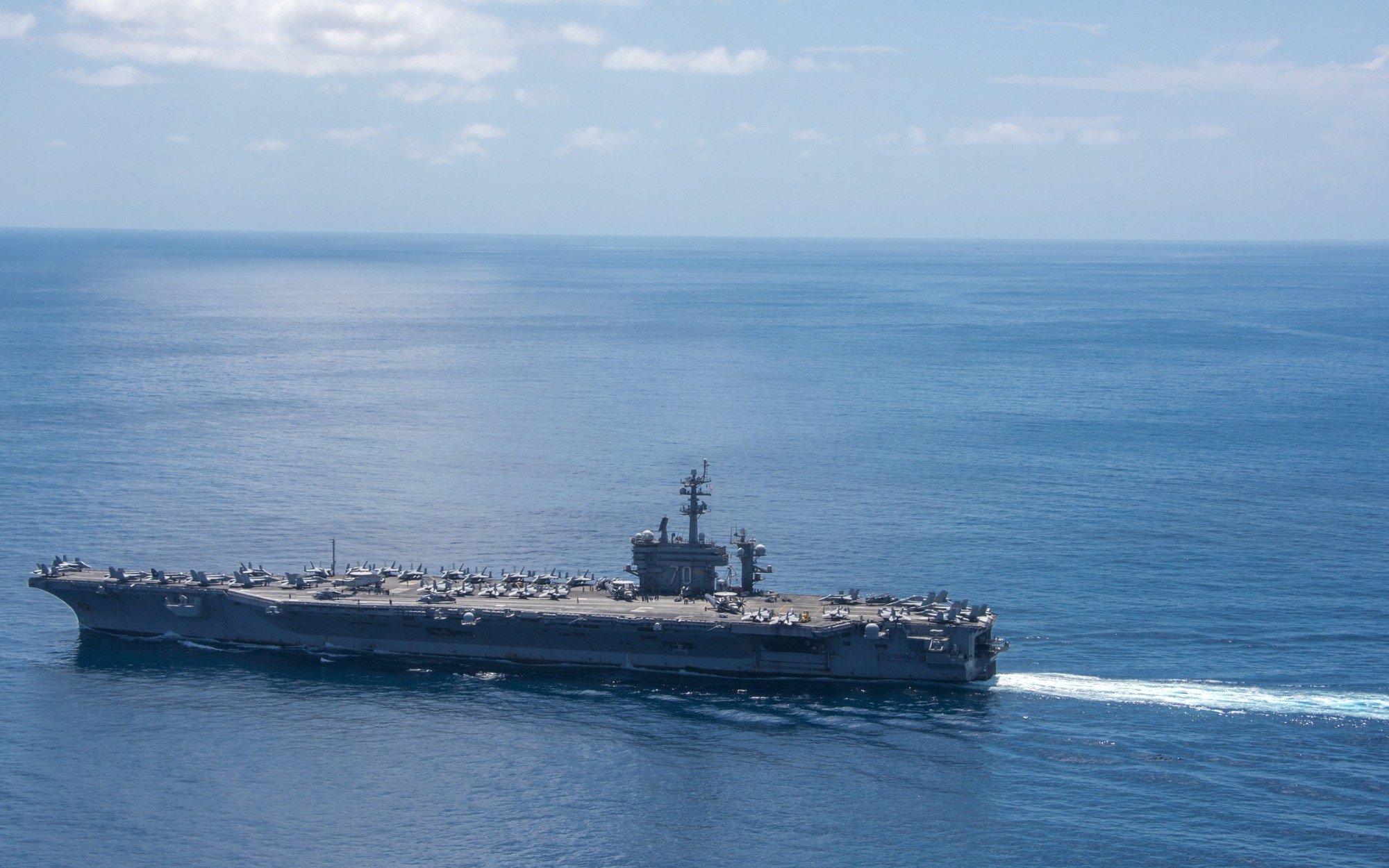Would China's South China Sea Fake Islands 'Sink' in a War?
China’s military has built an impressive defensive array around Chinese islands in the South China Sea. These systems can be deployed to degrade America’s long-range ballistic missile threat to those manmade islands.
What You Need to Know: China’s militarization of the South China Sea (SCS) has established a powerful anti-access/area-denial (A2/AD) network across the region, positioning it to delay or block U.S. intervention in a Taiwan contingency.

-Advanced surveillance, defensive, and offensive capabilities stationed on China’s manmade islands give Beijing a strategic edge in the opening stages of any conflict, potentially inflicting heavy losses on U.S. forces.
-This setup relies on achieving swift strategic dominance before U.S. responses can degrade its island defenses. Analysts agree the U.S. could eventually counter these islands but may face costly setbacks in early engagements, highlighting escalating risks in U.S.-China tensions.
China’s South China Sea Bases Could Delay U.S. Response in Taiwan Crisis
America’s elite want you to think that they’ve got everything under control. In fact, they’ve lost control. The new reality is that the United States is a declining power in regions of the world that it once took for granted, notably in the region that the Pentagon now calls the “Indo-Pacific.”
According to former U.S. Navy Admiral Mike Studeman in a post on X, “China is working very hard at having superiorities [throughout the South China Sea] that nobody else can match.” Studeman continued his post by adding, “They’ve built an ability to project power with multiple types of capabilities—air, missile, militia, ships, submarines.”
In other words, Washington has sat idly by as its greatest geopolitical foe has marshaled its strength, enhanced its strategic position, and created capabilities that are tailored for stunting U.S. military power projection in regions that China claims as its own, such as the South China Sea (SCS) and the Taiwan Strait. China is also developing the means to potentially wrest control of the East China Sea and Yellow Sea from their other great regional foe, Japan. All this was unthinkable a decade ago.

China’s comprehensive military strength in the South China Sea
Alas, China’s strength and position in the SCS are so great that short of total war between the United States and the People’s Republic of China, there will be no rolling back of China’s presence in the SCS.
For instance, beginning in 2010, the Chinese military started a massive construction project throughout what international arbitration courts (and the United Nations) have already defined as international waters or maritime regions belonging to China’s neighbors in the SCS. These projects saw Chinese engineers build increasingly sophisticated and hardened military bases on manmade islands throughout the region.
China has placed complex surveillance stations on some of these manmade islands that monitor international shipping traffic through the crowded SCS and keep a close eye on the movements of foreign naval forces throughout the busy region.
Beyond their surveillance capabilities, China’s manmade islands are now sporting new runways to host increasingly large military planes and China is deploying a robust—and lethal—anti-access/area-denial (A2/AD) network across the region. This A2/AD network is meant to prevent the U.S. Navy and its allies from projecting power through the SCS against Chinese forces (and allowing for Chinese forces to more easily project power in the area while behind the protective bubbles of those A2/AD networks).

America will lose the opening stages of a war with China
In 2020, Gregory B. Poling of Washington’s Center for Strategic and International Studies argued in War on the Rocks that “without the Enhanced Defense Cooperation Agreement, or some undiscovered (and unlikely) stand-in, U.S. forces would have little choice but to concede the waters and airspace of the South China Sea to China in the opening stages of a conflict.”
Poling’s excellent article further stated that, “The logistics and maintenance hurdles China would face during wartime would likely prevent the island bases from effectively operating over the long-term. But for several weeks at least—time that would be critical in a Taiwan contingency, for instance—they would pay huge dividends for Beijing.”
Responding to Poling’s 2020 essay, Olli Pekka Suorsa, a research fellow at the Institute of Defense and Strategic Studies at the S. Rajaratnam School of International Studies in Singapore, disputed Poling’s conclusions. In Suorsa’s summation, “U.S. tested conventionally armed intermediate range ballistic missile[s]” that were “once banned under the intermediate-range nuclear forces treaty (INF)” are the surest way to end the purported threat that China’s manmade bases pose in a potential conflict with the United States.
Strangely, both analysts are in agreement on one aspect: in the long run, the United States would likely be able to knock those manmade bases out in a war—or at least degrade their threat considerably, using weapons like long-range ballistic missiles as well as whatever hypersonic missiles the Americans could deploy (although the United States lags far behind the Russians and Chinese in deployable and reliable hypersonic weapons). Yet, in the short run, the Americans are going to get rocked hard by Chinese forces stationed at those manmade islands.
China’s defensive capabilities
What’s more, China’s military has built an impressive defensive array around Chinese islands in the SCS. The Asia Maritime Transparency Initiative first reported on Beijing’s defensive measures in 2016. According to its analysis, China has “built significant point-defense capabilities, in the form of large anti-aircraft guns and portable close-in weapons systems (CIWS).” In 2022, China proudly announced the success of its anti-ballistic missile system that it “billed as a bulwark against a hypothetical U.S. attack,” according to the Washington Examiner.
These systems can be deployed to degrade America’s long-range ballistic missile threat to those manmade islands.
And the fact that the anti-ship ballistic missile arsenals that undergird China’s A2/AD systems throughout the SCS will assuredly prevent the U.S. Navy from deploying its surface warship fleet—notably U.S. Navy aircraft carriers—against those fortified Chinese islands significantly reduces America’s threat to those islands. Then there are also the incredible developments that China has made in radar detection and even anti-hypersonic weapons technology—all of which will be deployed in defense of those manmade islands.
A final daunting issue for the Americans to overcome is the Chinese first-strike threat to the U.S. Air Force’s permanent forward bases in the Indo-Pacific, in places like Guam. China has already practiced hitting those areas as part of an opening bid to end America’s threat to its forces in the region.
So, Poling’s take about those islands paying “huge dividends” to China in the opening phases of a war with the United States is apt.
China’s entire plan relies upon achieving strategic surprise long enough to surround and possibly invade neighboring Taiwan. Once that occurs, and the Chinese have achieved escalation dominance over the Americans and their allies, Beijing believes it will be able to force a negotiated settlement with Washington.
But even if China cannot do that, if the Americans decide to respond more forcefully, the costs to both sides will be far greater than what either government thinks.
About the Author:
Brandon J. Weichert, a National Interest national security analyst, is a former Congressional staffer and geopolitical analyst who is a contributor at The Washington Times, the Asia Times, and The-Pipeline. He is the author of Winning Space: How America Remains a Superpower, Biohacked: China’s Race to Control Life, and The Shadow War: Iran’s Quest for Supremacy. His next book, A Disaster of Our Own Making: How the West Lost Ukraine, is available for purchase wherever books are sold. Weichert can be followed via Twitter @WeTheBrandon.


